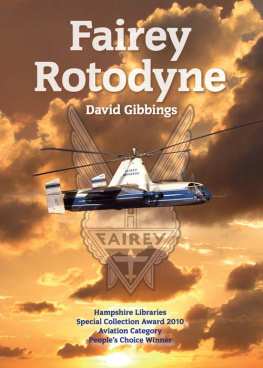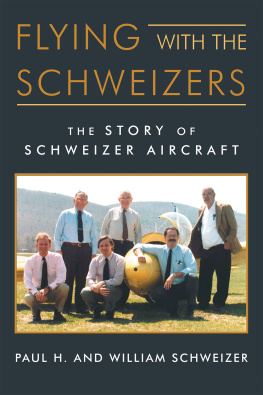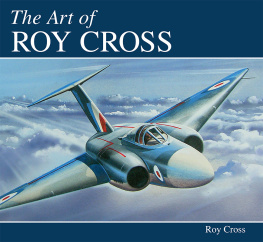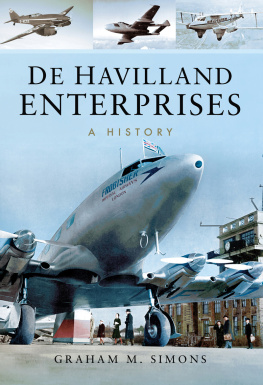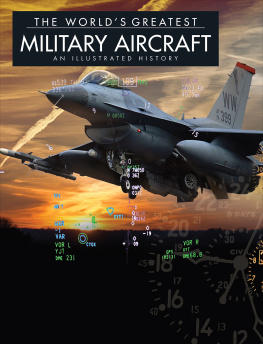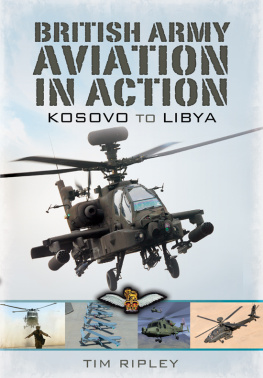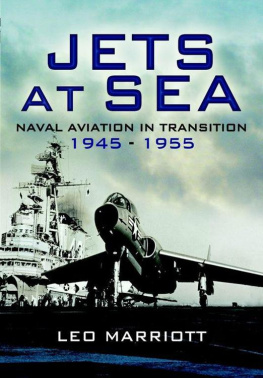
Contents
John Fairey 19352009
M ost people remember their first flight in a helicopter. I certainly do no clockwork mouse of a helicopter for me. My first flight in a rotorcraft was in the Fairey Rotodyne, and even after a lifetime spent flight-testing helicopters and aeroplanes, it still remains one of the most adventurous and exciting of all those various aircraft with which I became involved.
This book has grown from a lecture request from the Society of Flight Test Engineers, which was delivered in Berlin in 1994, and subsequently enlarged, to be offered as the forty-fourth Cierva Lecture, presented to the Royal Aeronautical Society in London, in 2003, the year in which we celebrated 100 Years of Powered Flight. Now we have just marked 100 Years of Aviation in Britain, and the Rotodyne, having played a significant part in both events, deserves its place in history.
In 2007, I was asked to repeat the lecture as part of a celebration commemorating the first flight of the Rotodyne, in 1957, and it occurred to me that nobody has produced a book about this exciting aircraft in the intervening fifty years.
Here I will confess that I am very self-conscious of the fact that my personal involvement in the programme was as a very junior member of the team, joining towards the end. I have, however, been well placed in having access to what archive material is still available at Yeovil, and it is my hope that those who played a greater part in making this history will forgive my audacity.
As with all such books, there are a great number of individuals and organisations who deserve my thanks. Of these, I feel I must start with AgustaWestland, which is the current identity of my erstwhile employer, Westland Helicopters, and of the earlier Fairey Aviation. It is from this group that I was able to acquire the data, drawings and photographs necessary to compile this record, and the freely given permission to publish that has made it all possible.
My use of the Fairey logo on the cover gave me a surprise. I found it hard to establish who has ownership of this design, and my investigations led me to the General Dynamics Corporation, who may have inherited it through their involvement in Fairey Hydraulics. I was given the permission I required, although GD remains uncertain of the precise ownership. For myself, I thank them and trust that anyone else who may lay claim will appreciate that my request, which was made out of courtesy, also applies to them.
Flight International was, indeed, generous in granting permission to use their cutaway drawing, photographs and the article by Ron Gellatly, without any reservations. My negotiations with Andrew Costerton left me with a warm feeling that I was dealing with friends. It was no less the case when I sought permission to use material from Aeroplane; Michael Oakey was generous and accommodating, and both these great journals have my sincere admiration.
Producing art work to the high standards set by The History Press would have been considerably harder without the assistance of Doug Lloyd, who patiently accepted all my demands in spite of his own punishing work schedule. Doug is also responsible for the striking cover design; I know that you should not judge a book by its cover, but I can only hope that the content fulfils the promise implied by Dougs work.
The AgustaWestland photographic group deserve a special mention for the way in which they dealt with the numerous old negatives I presented them with. It is due to their efforts that there are several photographs, hitherto unpublished, that can now be seen in this book.
The Carter Aircraft Corporation and Groen Brothers Aviation of America are two companies who have picked up the challenge, and are currently working on projects that incorporate some of the technology that distinguished the Rotodyne. Both groups were extremely helpful, and I wish them the success that was so carelessly abandoned by faint-hearted officialdom so long ago. Remember: Fortune favours the brave!
I have carefully avoided naming individuals within the book, on the grounds that the success of any venture relies upon the collective effort of all concerned.
For my own venture in the form of this book, I must acknowledge the help and support of friends and colleagues, many of whom are unaware that they have done anything: Fred Ballam, David Balmford, Tony Bamford, Mike Breward, Peter Bunniss, Bruce Charnov, Andrew Costerton, Sonny Darlington, Jack de Coninck, Pat Douneen, John Elver, John Fairey, John Firmin, David Groen, Mike Hirschberg, Dr G.S. Hislop, Anita Infante, Derek James, Alan Jeffrey, Doug Lloyd, Michael Oakey, Tony Pike, Norman Parker, Simon Prior, Ted Roadnight, Vic Rogers, Geoff Russell, Jim Schofield and John White. I am sure there are others, who have my apologies, but then, I am of an age now that I can claim a senior moment, so I am sure they will forgive me.
I feel that I must pay tribute to the memory of Dipl Ing August Stepan, for whom I worked during my time with Rotodyne. Working for Steppie gave me a link with the past (he flew the Doblhoff jet helicopter on its first flight in 1944), and what I learned from him and his team steered the rest of my career in aviation.
The Rotodyne story is a tale of vision, ingenuity, achievement, unfulfilled promise and lost opportunity. What was achieved has stood the test of time; what was carelessly lost has given us cause to regret, and to wonder, it couldnt happen again, could it?
HELICOPTER
A rotorcraft, which throughout its flight derives substantially the whole of its lift, control and translational thrust from a power-driven rotor system, whose axis (axes) is (are) fixed and approximately perpendicular to the longitudinal axis of the rotorcraft.
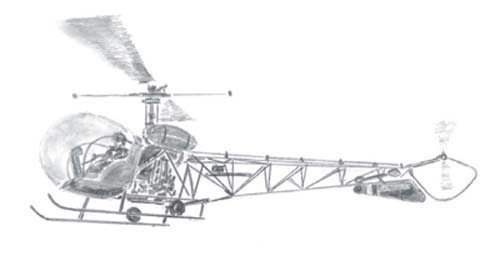
GYROPLANE (Autogiro)
A rotorcraft which, throughout its flight, derives the whole, or a substantial part, of its lift from a freely rotating rotor. The gyroplane provides propulsive power through its propeller, pushing or pulling (configuration dependent) the rotor through the air to sustain level flight or climb.
Note: Throughout this book the term autogiro has been presented with the spelling used and originally patented as a Trade name by Cierva. It would be quite correct to use the term autogyro but the alternative usage has been deliberately adopted as a tribute to Juan de Cierva, to recognise his status as a rotorcraft pioneer.
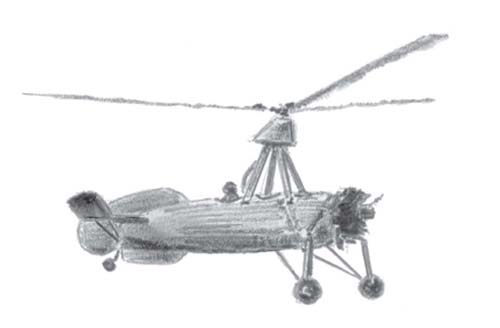
COMPOUND HELICOPTER
A rotorcraft which, in vertical or hovering and low speed horizontal flight, derives substantially the whole of its lift and control from a power-driven rotor system, whose axis (axes) is (are) approximately perpendicular to the longitudinal axis of the rotorcraft during such vertical or hovering flight, and in translational flight may derive a proportion of its lift, forward thrust or control from the embodiment of wings and/or propulsion systems.
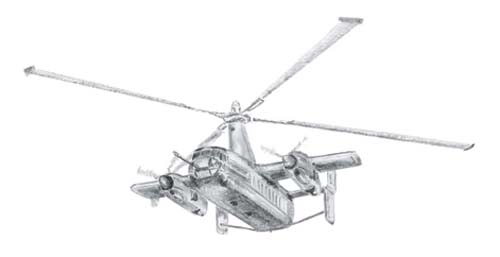
CONVERTIPLANE
A rotorcraft which is capable of conversion during flight, so that lift is substantially or totally transferred from the rotors to other lifting devices such as fixed wings. A convertiplane will either incorporate a propulsive system to provide forward thrust, or may, as in the case of a tilt-rotor machine, re-configure the rotor to accept the role of a propeller.
Next page
